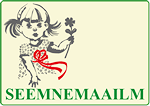Magnificent bouquet!
The plant is 65 cm high, pyramidal in shape. Peduncles are strong, 40-45 cm long. Inflorescences are hemispherical or spherical, double, 10-13 cm in diameter, 12-14 pieces per plant.
Reed flowers are tightly pressed to each other and bent in the middle.
Flowering: August-September.
They are used very widely: for planting in prefabricated flower beds in groups, for flower beds - in rows and for cutting.
Agricultural technology.
Aster - cold-resistant (withstands short-term frosts), light-loving plant, prefers well-drained soils rich in organic matter, without making fresh manure.
Asters can be planted in their original place no earlier than after 6 years. To avoid bacterial wilt, it is necessary to sow in sterile soil (spill with boiling water) and sow the seedlings as early as possible.
It is necessary to avoid damage to the roots (the plant can be affected by fungal diseases) and waterlogging of the soil, and also make sure that aphids do not appear.
The earlier the seedlings are planted, the better the quality of the stems and the higher the yield.
Sowing: for seedlings from March to April indoors in boxes according to the scheme: 6 x 6 cm, to a depth of 0.5 cm.
Soil for seedlings: 1/7 peat, 1/10 sod land, 1/10 sand, 1/10 mullein.
Germination: 7-14 days at 15°C (water sparingly with warm water). 1-2 weeks before planting, it is recommended to harden the seedlings by lowering the temperature to + 10 ° C.
From May, seedlings (at the age of 60-65 days) are planted in open ground according to the scheme: 30 x 30 cm.
Seeds are sown in open ground until the beginning of June (pre-soaked for a day in a solution of growth stimulants, washed, dried).
Care.
Feeding is done:
1) in the phase of 2 true leaves;
2) a week before landing in open ground;
3) during the formation of inflorescences.
Flowering: from mid-July to September. If the seeds are planted under the film in June, then the plants will bloom in September (the flowers will be slightly smaller, but will bloom at the same time). When sown in December/January, plants bloom from mid-May.
* ASTERS DISEASES.
Fusarium. Fusarium wilt, or aster fusarium, is a fungal disease that is caused by one of the fungi of the Fusarium genus.
The disease usually manifests itself already in adult plants, in the phase of budding and the beginning of flowering.
Radical measures to combat the disease have not yet been invented. However, there are preventive control measures that can reduce the incidence.
It is very important for the aster to create a crop rotation on the site, and crop rotation on large areas.
Aster should alternate with other flower and vegetable plants so that it returns to its original place no earlier than after 5, preferably 6 years.
Manure and fresh compost should not be applied to the site that is being prepared for planting asters, but only humus and well-rotted compost.
Field resistance to Fusarium is increased by all methods that increase the physiological resistance of plants, namely: pre-sowing treatment of seeds with microelement solutions, growing healthy, strong seedlings, foliar top dressing with macro- and microfertilizers.
Plants should not be planted densely, it is necessary that the aisles are well ventilated and water does not stagnate at the root collar.
Plants affected by Fusarium should be removed from the site or from the flower garden as soon as possible. In no case should they be buried in the ground or composted.
They must be burned. And, of course, it is very important to choose the most resistant to Fusarium varieties for planting. And there are many such varieties.
In wet summer, in addition to fusarium, aster can be affected by gray rot, verticillium, and powdery mildew. In the fight against these diseases, periodic treatments with preparations such as fundazole help.
Occasionally, viral diseases appear on the aster - jaundice and cucumber mosaic. To prevent these diseases, it is necessary to deal with periodically appearing aphids.
It is the main carrier of viral diseases on plants. Plants affected by viruses are removed and burned as soon as possible. They should not be buried in the ground or laid in compost.
PESTS.
Kidney aphid. It damages young plants even in seedlings, when plants have only 3-4 true leaves. The bud aphid causes deformation of the leaves at the top of the plants.
The leaves seem to be wrinkling.
Control measures: spraying with chlorophos, karbofos, decis or Inta-Vir is used. Spraying should be carried out early, when the plants have no more than four true leaves.
In addition to aphids, aster can be damaged by tobacco thrips, slobbering pennitsa, and meadow bugs. To combat them, use approved and commercially available drugs.












